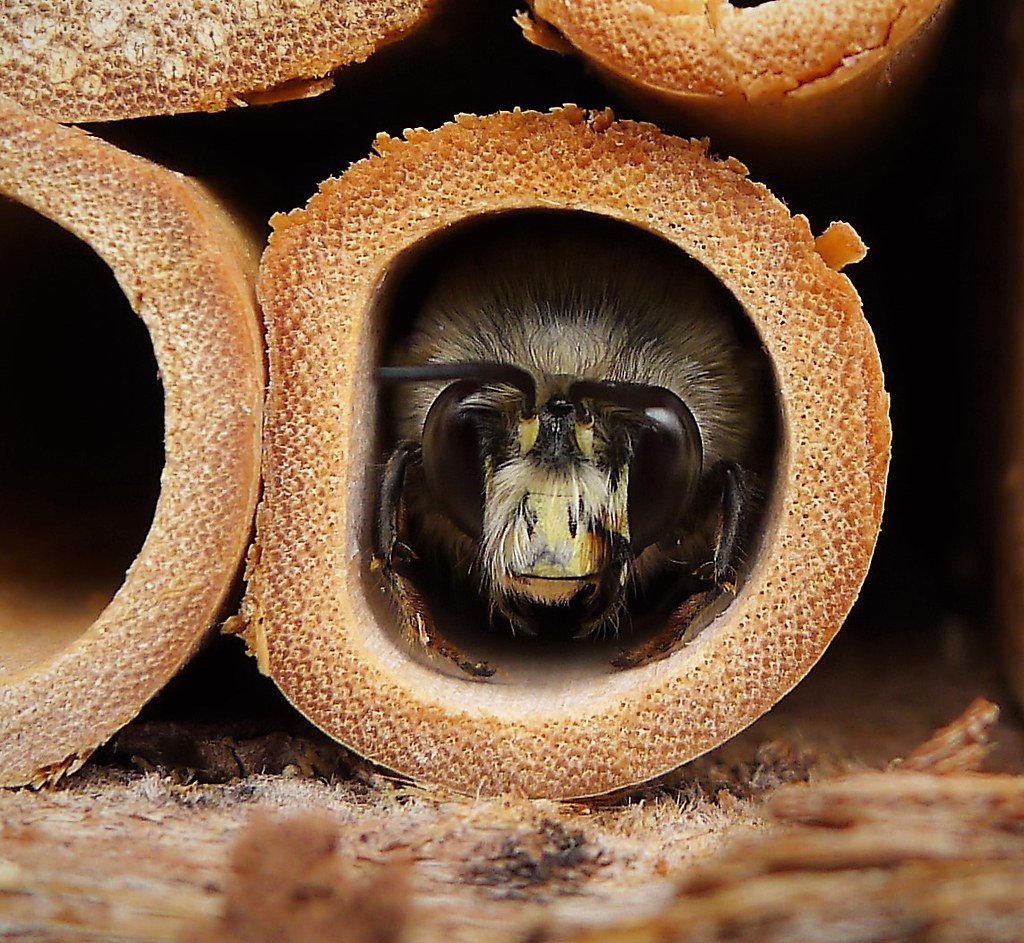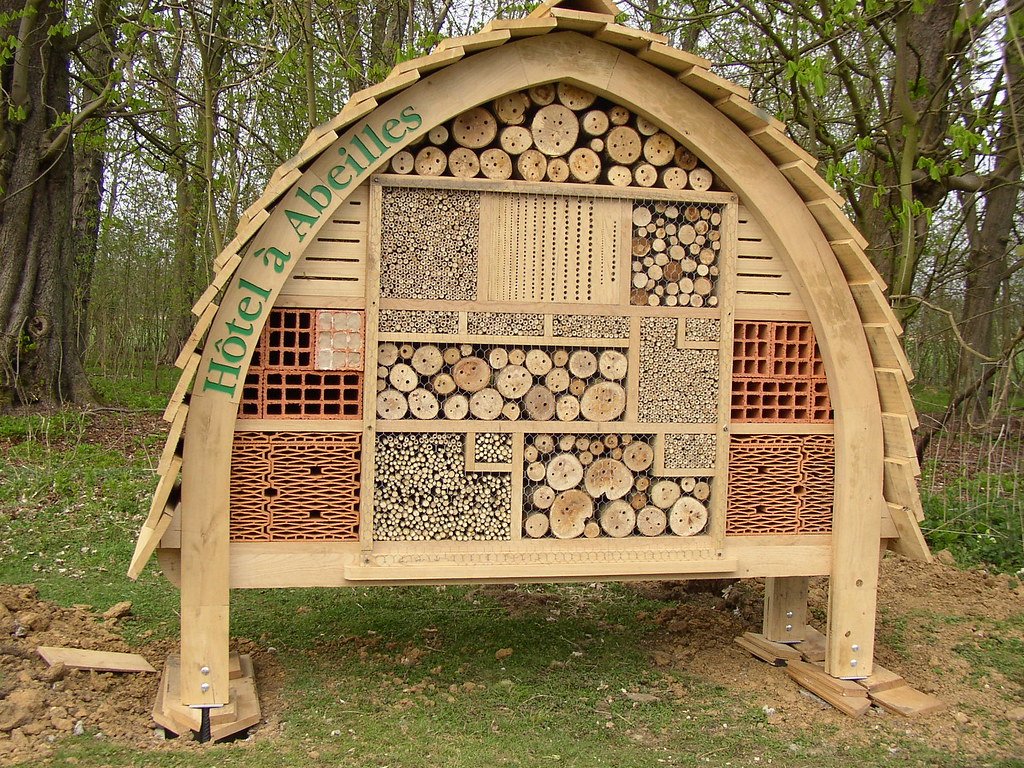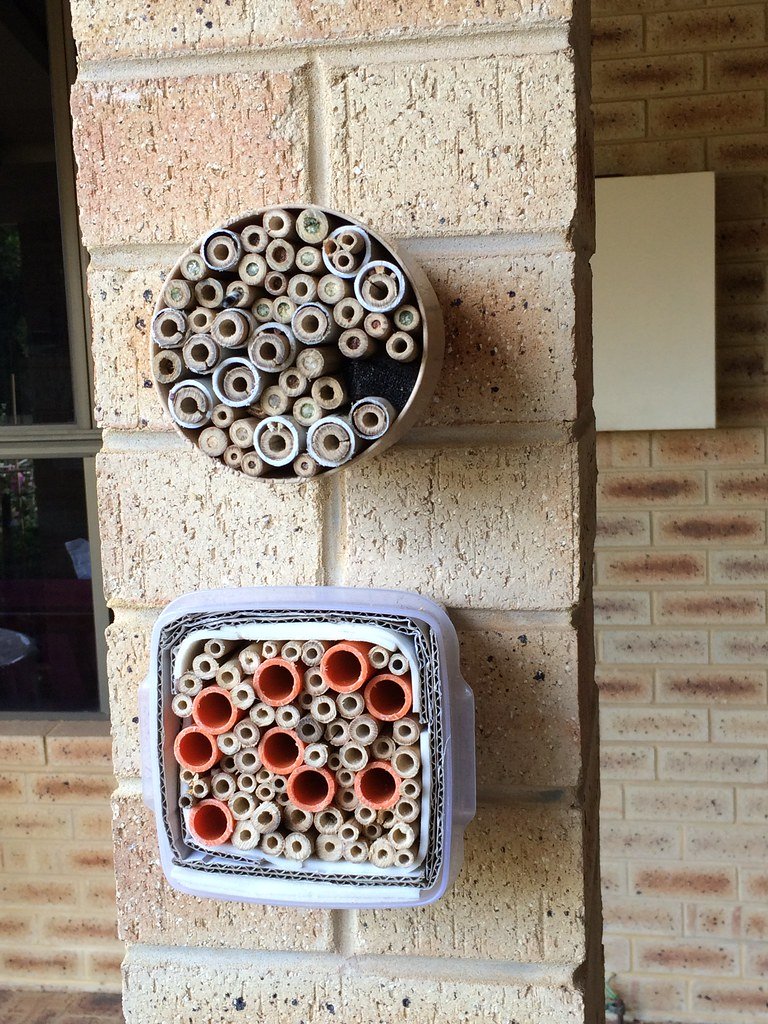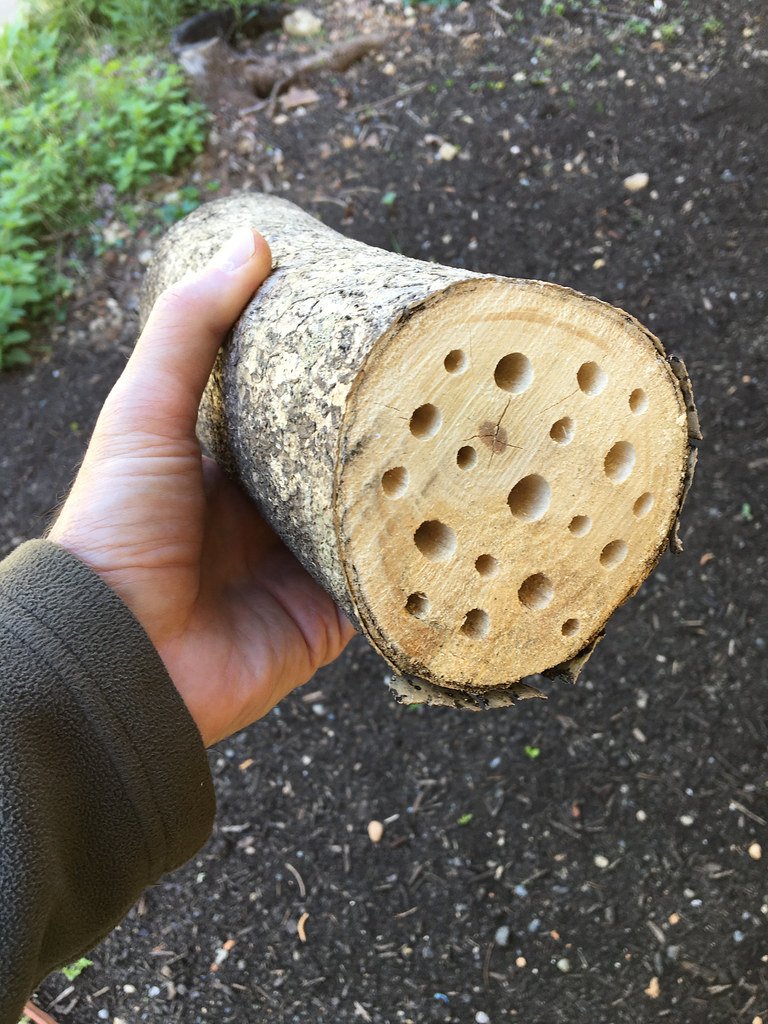DIY Bee Stopover: Build a Bee Hotel

Welcome to the Bee Stopover Project
I love any project involving bees. My primary school had hives in the school’s quadrangle. I don’t remember anyone getting stung; we were all so used to each other, even in the classrooms..
Who’s going to live here?




Solitary bees, the quiet pollinators, live alone and do some of the hardest work in our gardens and forests.
These little bees don’t make honey, but they pollinate more flowers per visit than honeybees. Some tuck themselves into hollow plant stems. Others nest in cracks in wood or tiny holes in the ground. But today, it’s getting harder for them to find safe places to rest and lay eggs.
That’s where you come in.
By building a simple bee stopover—sometimes called an “Air Bee and Bee”—you’re giving these helpful pollinators a place to rest, raise their young, and stay safe through the winter. It’s a small act of kindness that makes a big difference.
NB: Don’t use store-bought bee hotels. They may create more problems.
What You’ll Need
- Hollow plant stems (6–8 inches long) or store-bought bamboo. Get creative with other materials like drilled bricks. Just stay away from metal tubes. They’ll get too hot.
- String, twine, or garden wire (for bundling)
- A tin can, small wooden box, or other container (see ideas below)
- Pruners or a handsaw
- Safety gloves (some stalks are pokey)
Step 1: Gather Your Stalks
Look for dead, dry stems from late fall or early spring pruning. Aim for a mix of stem diameters (from pencil-thin to drinking straw size). This variety helps attract different bee species
Here are some common hollow or pithy-stemmed plants that grow where I live in New Brunswick (NB), Canada, Look for native plants in your region. Or, as you can see from the images. There are lots of other options and combinations.
Native and Naturalized Hollow or Pithy Stem Plants in NB (Bee Habitat-Friendly)
| Plant Name | Notes |
| Joe-Pye Weed (Eutrochium spp.) | Tall native perennial with pithy stems. Good for pollinators during bloom, and stems are great for nesting once dry. |
| Common Elderberry (Sambucus canadensis) | Big shrub with soft, pithy stems. Easily hollowed. Bees use old stems for nesting. |
| Raspberry / Blackberry canes (Rubus spp.) | Native and naturalized varieties everywhere. Old, dry canes are commonly used by solitary bees. |
| Sumac (Rhus spp.) | Staghorn sumac grows wild all over NB. Pithy stems that bees and other insects will use. |
| Goldenrod (Solidago spp.) | Not truly hollow but has soft pith that some stem-nesting bees will excavate. |
| Milkweed (Asclepias spp.) | Again not truly hollow, but thick enough when dry for some smaller cavity-nesters. |
| Hollow Reed Grass (Phragmites australis – native strain) | Be cautious: There’s an invasive strain, but native phragmites or other local grasses with hollow stems work well. |
| Sunflowers (Helianthus spp.) | Once fully dried, large sunflower stems can be hollow or pithy and good for bee nesting. |
How to Use Them for Bee Stopovers:
- Cut stems in late fall or early spring after flowering is done and bees have moved on.
- Lengths: 6 to 8 inches (15–20 cm) for smaller bee species.
- Diameter: Variety of stem sizes from 1/8 inch to 1/2 inch (3–12 mm) is best.
- Leave one end sealed (natural node, or cap it).
- Mount horizontally or bundle vertically, sheltered from heavy rain but open to sun.
Extra Tip:
Tip: Make sure one end stays closed (use natural nodes or cut above a node).
Step 2: Cut to Size
Cut each stem to 6–8 inches long.
Solitary bees like tunnels 3–8 inches deep and open at one end, closed at the other.
Step 3: Bundle Them Up
Tie your stems together into a tight bundle using string or garden twine.
Optional: Slide the stems into an old tin can, small wooden box, or a cardboard tube for extra support (see container ideas below).
The open ends face out and tilt slightly downward to keep rain from collecting.
Step 3½: Upcycled Container Ideas
You don’t need fancy materials! Look around your home, shed, or recycling bin for something that can hold your stem bundle snugly and protect it from the weather. You can use almost anything. But stay away from pressure-treated wood.
Step 4: Placement
Choose a sunny, sheltered spot:
- Facing east or southeast (the morning sun helps warm the bees and wake them up).
- Out of heavy rain or wind.
Mount it about 3–5 feet off the ground, attached securely to a post, wall, or fence.
Step 5: Maintenance
- Leave it up through winter! Bees overwinter inside.
- In early spring (after bees emerge), replace old stalks with fresh ones to prevent disease buildup.
- If you used invasive plants like knotweed, burn or bag any leftover material—don’t compost it!
